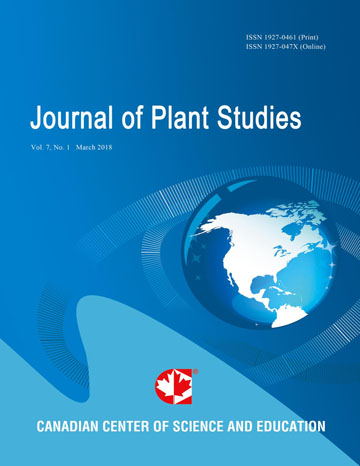Effects of Planting Method on Enhanced Stand Establishment and Subsequent Performance of Forage Native Warm-Season Grasses
- Vitalis Temu
- Maru Kering
- Laban Rutto
Abstract
To develop strategies for successful establishment of forage native warm-season grasses (NWSGs) in southeastern USA, early agronomic performance of transplanted and seeded stands of big bluestem (BB, Andropogon gerardii Vitman), eastern gamagrass (GG, Tripsacum dactyloides L.), indiangrass [IG, Sorghastrum nutans (L.). Nash], and switchgrass (SG, Panicum virgatum L.) were compared. In early June, about 6-week old high tunnel grown seedlings were transplanted to assigned clean seedbeds. Plant spacing (cm) was 30-within and 45-between rows. Seeded plots received ≥ 11 kg seeds ha-1 planted at ≤ 2 cm deep in 45-cm wide rows, a month after transplanting to match rainfall availability. As needed, tall-growing broadleaf weeds were removed physically by cutting with a hand hoe. Plants were allowed uninterrupted first year growth with no fertilizer applied. Early in the following spring, dead standing biomass was mowed down to allow the emerging tillers more access to sunlight. During the second and third year after planting, plots were machine harvested twice between July and September for yield assessment. Percentage ground covered by plant material and species basal diameters were also recorded. Data were analyzed as a randomized complete block design for effects of planting method, species, and stand age. Except for GG, transplanting resulted in greater (>3,000 kg DM ha-1) forage yield and more so during the second harvest year. Total second year yields were similar for BB and GG and averaged 9,600 and 6,300 kg DM ha-1 for transplanted and seeded, respectively. Indiangrass and SG yields (kg DM ha-1) were 11,500 and 8,300 and 13,000 and 10,000 for transplanted and seeded plots, respectively. The NWSG ground cover was greater in the transplanted than seeded plots, while the reverse was true for weed cover. Data indicate that, in less than two years, transplanting under comparable growing conditions can produce harvest-ready uniform NWSG stands in weed infested areas. For practical recommendations, however, data on comparable responses of transplanted vs seeded stands to actual grazing at a similar timing is necessary.
- Full Text:
 PDF
PDF
- DOI:10.5539/jps.v5n1p38
Index
- AGRICOLA
- CAB Abstracts
- CABI
- CAS (American Chemical Society)
- CNKI Scholar
- Elektronische Zeitschriftenbibliothek (EZB)
- Excellence in Research for Australia (ERA)
- Google Scholar
- JournalTOCs
- Mendeley
- Open policy finder
- Scilit
- Standard Periodical Directory
- Technische Informationsbibliothek (TIB)
- WorldCat
Contact
- Joan LeeEditorial Assistant
- jps@ccsenet.org
